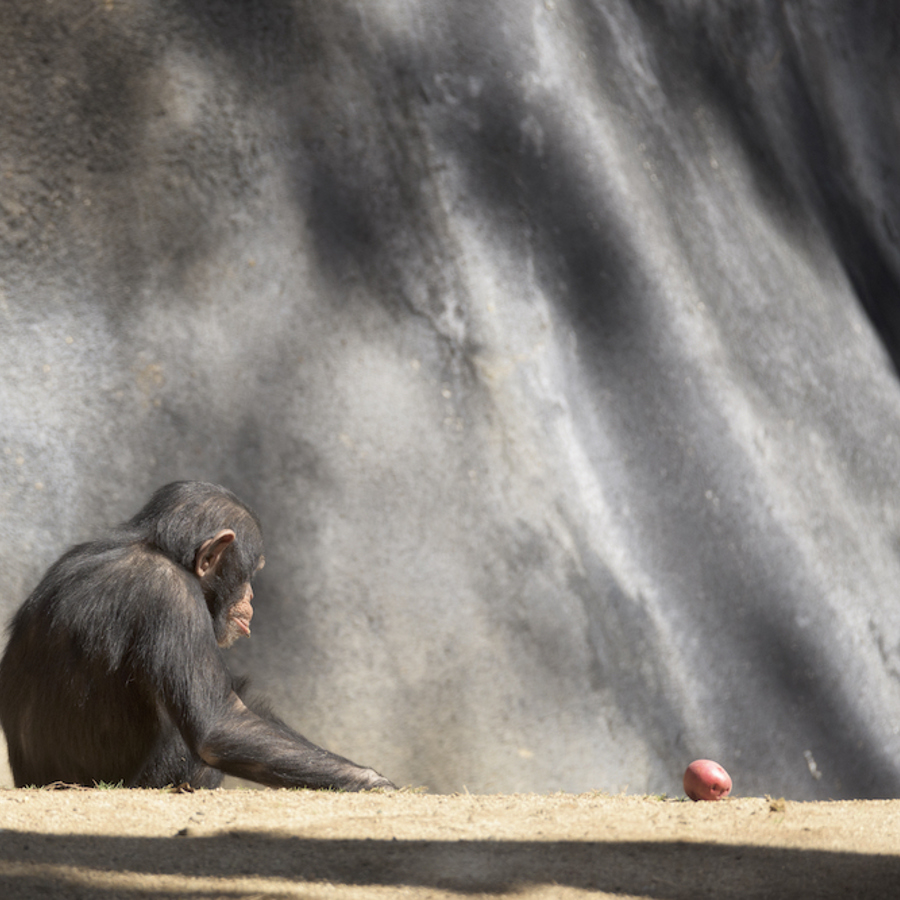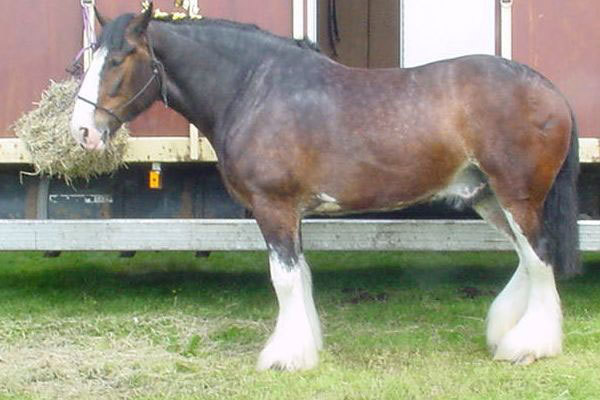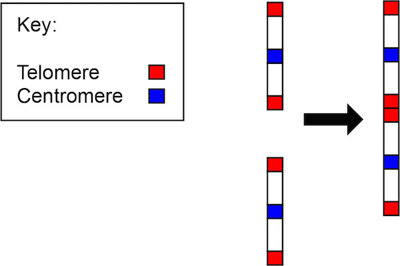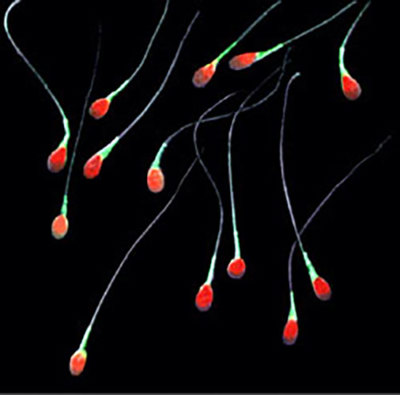
Why do chimpanzees and potatoes have the same number of chromosomes?
March 13, 2008

- Related Topics:
- Comparing species,
- Speciation,
- Meiosis,
- Chromosomes,
- Evolution,
- Editor's choice
A curious adult from India asks:
“Would you please tell me if chromosome number is a factor in identifying and distinguishing species? Why is the chromosome number of a potato and a chimpanzee the same?”
As the second part of your question shows, you can't identify a species by chromosome number alone. A potato and chimp are clearly not the same species! But chromosome number can help distinguish between species.
Imagine you wanted to identify an animal. You're told that it has four legs, hooves and is used for farm work. Of course, many animals fit that description.
Now, let's say you've narrowed it down to a horse or a donkey. Knowing the chromosome number could help. If the animal has 64 chromosomes, then it must be a horse. Donkeys have 62 chromosomes.
But if you only knew the animal has 64 chromosomes, you couldn't tell a horse from a guinea pig. So the number of chromosomes may be a good clue but is pretty useless on its own.
All of this begs the question, what is a chromosome? And how do species end up with the number they do?
A chromosome is a long piece of DNA with genes on it. Plants and animals have thousands or tens of thousands of genes scattered throughout their chromosomes.
Each gene is a stretch of DNA that has the instructions for a specific protein. These thousands or tens of thousands of proteins all work together to make a working plant or animal.
What this means is that the genes, not the chromosomes, matter in making a plant or animal what they are. Chromosomes are really just how the genes happen to have been grouped over the history of the plant or animal. And the way the genes are grouped can change.

 Think about it like piles of clothes on the floor of a kid's room. The chromosomes are the piles and the genes are the clothes. The clothes in the piles can be put together to make whatever outfits the kid usually wears.
Think about it like piles of clothes on the floor of a kid's room. The chromosomes are the piles and the genes are the clothes. The clothes in the piles can be put together to make whatever outfits the kid usually wears.
It really doesn't matter how many piles the clothes are in as long as all of his or her clothes are there. Same thing with genes. It doesn't matter if human genes are in 46 or 56 chromosomes -- it's the genes that matter.
And there is a wide range of chromosome numbers. Animal chromosome numbers range from 254 in hermit crabs to 2 in a species of roundworm.
The fern called Ophioglossum reticulatum has 1260 chromosomes! Humans have 46, chimpanzees have 48, and yes, potatoes also have 48. All of these numbers have come about because of chance.
As I said, chromosome numbers can change over time. They can stick together by accident through a process called fusion. Although this decreases the number of chromosomes, little or no genetic information is lost. The chromosome number just goes down. Like making 2 smaller piles of clothes into one bigger pile.
Extra chromosomes can happen through mistakes when cells divide. This is called polyploidy. Now there are extra copies of the chromosomes that were there before. This is like going to the store and buying duplicates of some of the kid's clothes and making a new pile.
Both of these processes happen by chance. Let's dig a little deeper to see how each works.
Fusion: Decreasing chromosome number
Fusion is a common way for animal species to end up with a different number of chromosomes from their ancestors. In fact, fusion is most likely what happened to humans on their way from the common human-chimp ancestor.
When scientists compare the chromosomes of a human and a chimp, they line up pretty well. Except for one.
Human chromosome 2 looks like two chimp chromosomes stuck together. At some point, either two chimp chromosomes stuck together or a human one split apart. The most likely explanation is that two chimp chromosomes fused together.
Part of the reason scientists think that two chimp chromosomes fused together is that chromosomes almost never split apart. Scientists believe that this doesn't occur because a chromosome needs three parts to be passed on: 2 telomeres and 1 centromere.
Telomeres are DNA sequences at the ends of chromosomes that protect a chromosome from losing genetic information. Centromeres are important for when a cell divides. If a chromosome simply broke apart, the resulting DNA pieces would lack one of these three necessary parts.
This leads us to the second reason scientists think two chromosomes fused to make human chromosome 2. Scientists have found evidence of telomeres in the middle of the human chromosome. This suggests the two chimp chromosomes fused telomere to telomere.

The final reason is that most of the other great apes have the same number of chromosomes as chimps. This suggests that our common ancestor started out with 48 chromosomes.
What's happening to the DNA during these fusions? Cells have proteins that repair chromosomes when they break*. Usually, the repair proteins are very good at making corrections, but sometimes they reconnect the wrong ends. In the rare event that two chromosomes break and are mistakenly joined to each other, 2 chromosomes are fused together and become 1 chromosome. A chromosome is "lost".
*The repair proteins don't connect all the chromosomes into one big one because they can tell the broken ends from the unbroken ends.
Polyploidy: Increasing chromosome number
As I said, it’s also possible to increase chromosome number. But I also said that chromosomes don't usually split apart. So where do extra chromosomes come from?
This can happen from a different kind of cellular mistake. To understand this mistake, we need to go a bit deeper into how eggs and sperm are made.
Sperm and eggs are different from other cells because they have only half the usual number of chromosomes. Remember, many plants and most animals have two copies of each of their chromosomes in each cell--one from mom and one from dad. Sperm and eggs have only one copy of each.
Sperm and eggs accomplish this through a process called meiosis. Meiosis starts with a cell that has the normal number of DNA copies. The DNA within the cell is first doubled, making four copies of all of the chromosomes.
The chromosomes are pulled to opposite sides of the cell so that each side has 2 copies of each chromosome. The cell then divides into 2 daughter cells.
In each daughter cell, chromosomes are again pulled to opposite sides and the cells divide, leading to a total of 4 cells. Each of these cells has a single copy of each chromosome. This whole process happens so that when a sperm unites with an egg, the new beast will have the right number of chromosomes.
If a mistake happens while pulling chromosomes to opposite sides, a sex cell with the wrong number of chromosomes is formed. Sometimes this happens with a single chromosome. In people, this usually results in a miscarriage (although there are exceptions like Down syndrome or XXY, for example).

 Sometimes a sperm or egg cell ends up with two copies of all its chromosomes. If one of these sperm cells fertilizes one of these egg cells, an organism with four of each chromosome is formed. This beast has twice the number of chromosomes as the parents! (In humans, such a fetus usually does not survive.)
Sometimes a sperm or egg cell ends up with two copies of all its chromosomes. If one of these sperm cells fertilizes one of these egg cells, an organism with four of each chromosome is formed. This beast has twice the number of chromosomes as the parents! (In humans, such a fetus usually does not survive.)
As you can see, chromosome number is determined by random mistakes. So a chimp and a potato have the same number simply by coincidence. As do a human and a Reeve's Muntjak.

Author: Andrew Hellman
When this answer was published in 2008, Andrew was a Ph.D. candidate in the Department of Biology, studying synapse formation in Kang Shen's laboratory. Andrew wrote this answer while participating in the Stanford at The Tech program.
 Skip Navigation
Skip Navigation
